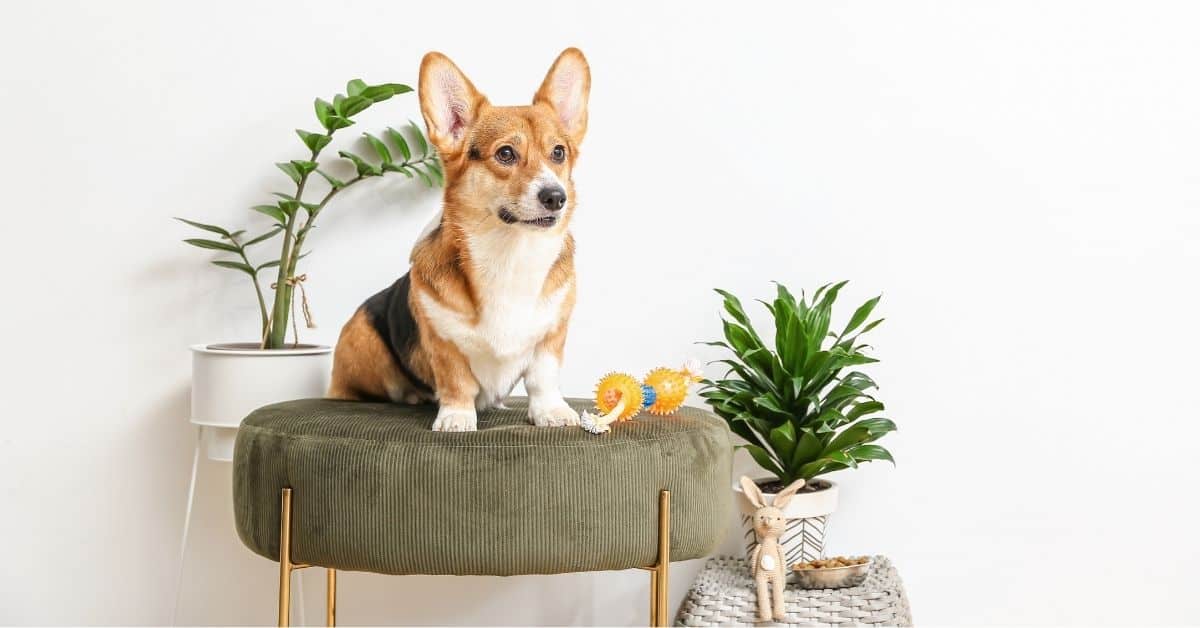Is your beloved furry friend at risk in your own home?
As pet owners, we often underestimate the potential hazards that lurk within the very walls that should provide safety and comfort.
From electrical cords that entice curious canines to toxic plants that pose a silent threat, our homes can be a minefield for our four-legged companions.
But fear not!
In this article, we will unveil the secrets to pet-proofing your home and creating a haven that ensures your dog’s safety and well-being.
Time is of the essence—take action now to prevent accidents and provide peace of mind.
Get ready to unlock the keys to a worry-free home where your dog can roam freely without danger lurking at every corner.
Create A Safe Environment By Securing Electrical Cords
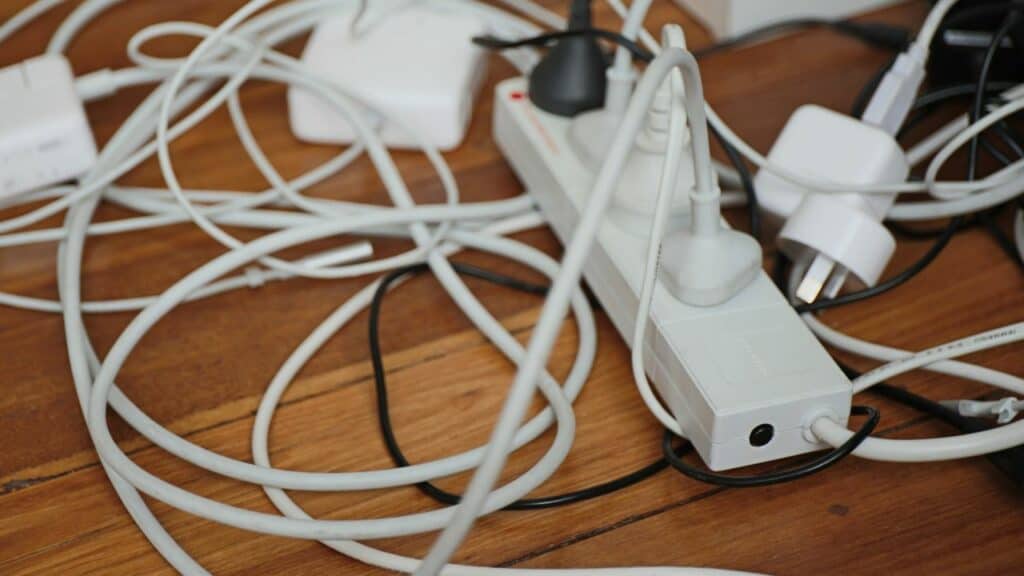
Creating a safe environment for your dog involves taking various precautions to ensure their well-being.
One important step is to secure electrical cords throughout your home.
Dogs are naturally curious creatures, and chewing on cords can lead to serious accidents such as electrocution.
To eliminate this risk, it is recommended to tuck away or cover exposed electrical cords.
Consider using cord protectors or routing cords behind furniture to keep them out of your dog’s reach.
By implementing these measures, you can create a safer space where your dog can roam freely without the danger of encountering potentially life-threatening electrical hazards.
Safely Store Toxic Substances To Prevent Accidental Ingestion
Being curious and exploratory by nature, dogs may sometimes stumble upon harmful substances commonly found in households.
This includes cleaning products, medications, and various chemicals.
To protect your dog from accidental ingestion, storing these toxic substances safely is crucial.
Consider keeping them in inaccessible cabinets to your pet, or use childproof locks to prevent their access.
Taking these extra precautions significantly reduces the risk of your dog ingesting toxic substances, which could lead to serious health complications or even be fatal.
Ensuring your dog’s safety by properly storing potentially dangerous items is an important aspect of responsible pet ownership.
Choose Pet-Friendly Houseplants Or Keep Toxic Plants Out Of Reach
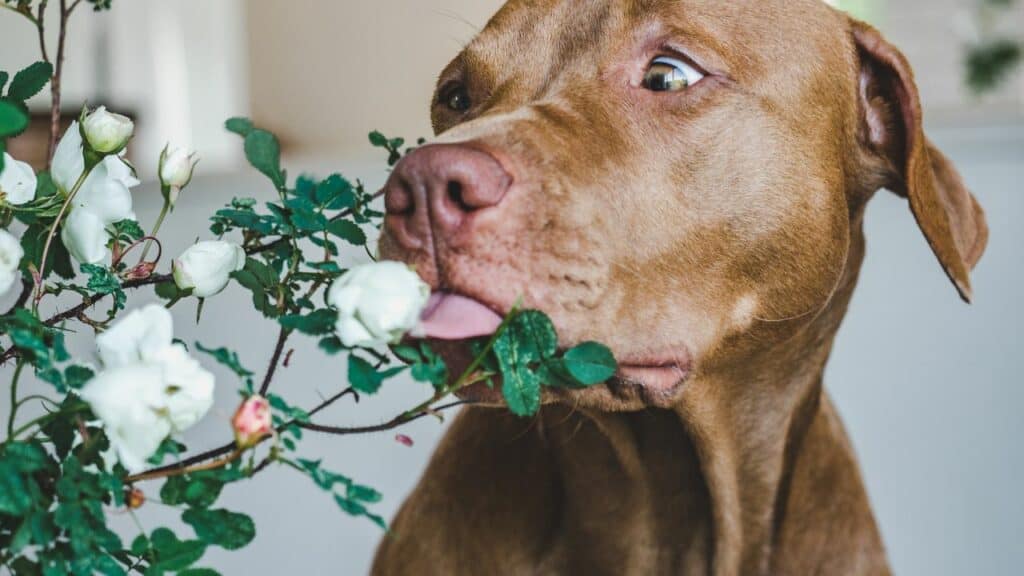
Houseplants can bring life and beauty to your home, but it’s important to be cautious when selecting plants if you have a dog.
Some common houseplants can be toxic to dogs if ingested.
Before bringing plants into your home, it is advisable to research and identify pet-friendly plant options.
Plenty of plant varieties are safe for dogs and can coexist harmoniously with your furry friend.
Alternatively, if you have unsafe plants for dogs, place them in elevated areas or hang them from the ceiling to prevent your dog from reaching them.
By being mindful of the plants you choose or strategically placing them, you can create a dog-friendly living space that allows you to enjoy the beauty of nature without compromising your pet’s safety.
Use Baby Gates To Create Boundaries And Restrict Access
Installing baby gates can be a practical and effective solution for creating boundaries and restricting your dog’s access to certain areas of your home.
For instance, if you have stairs, baby gates can prevent your dog from falling or attempting to climb them unsupervised.
They can also be used to keep your dog away from rooms with fragile items or potentially poisonous plants.
By strategically utilizing baby gates, you can create designated safe zones within your home where your dog can explore freely without encountering any hazards.
This protects your dog from potential accidents and provides you with peace of mind knowing that they are in a controlled and secure environment.
Prevent Access To The Trash Can To Avoid Ingestion Of Harmful Materials
Dogs have a knack for finding treasures in the trash can, but this behavior can be dangerous and potentially harmful to their health.
Rummaging through the garbage exposes them to spoiled food, bones, and toxic substances.
To prevent your dog from accessing the trash can, it is recommended to use a lidded trash can that your dog cannot open.
If possible, you can also keep the trash can inside a cabinet or install a dog-proof trash can designed to prevent access.
These measures help maintain cleanliness in your home and protect your dog from consuming harmful materials that could lead to digestive issues, choking hazards, or poisoning.
By proactively securing the trash can, you can effectively eliminate a common source of potential danger and keep your dog safe and healthy.
Make Cords Inaccessible To Dogs To Prevent Chewing Hazards
Exposed cords from lamps, computers, and other electronics can be an alluring target for a curious dog, especially when they are in a playful mood.
Chewing on cords not only poses a risk of electrocution but can also damage your valuable electronic devices.
It’s important to make these cords inaccessible to your dog by hiding or covering them.
Cord covers are a practical solution that encloses the cords, keeping them out of sight and out of reach.
Alternatively, you can tuck the cords behind furniture or secure them to the wall using adhesive hooks.
By taking these preventive measures, you minimize the chances of your dog chewing on cords and encountering potential electrical hazards, ensuring a safe environment for your four-legged companion.
Store Household Chemicals Safely To Prevent Poisoning
Various chemicals are commonly used in every household for cleaning, gardening, or maintenance purposes.
Unfortunately, many of these substances can be toxic if ingested by dogs.
To protect your furry friend from accidental poisoning, it is crucial to lock away chemicals securely.
Designate a locked cabinet or a high shelf as the storage space for household chemicals, including cleaning supplies, pesticides, fertilizers, and other potentially hazardous substances.
By keeping these items out of your dog’s reach, you not only prevent them from accidentally ingesting toxic chemicals but also create a safer living environment for your dog.
Remember, responsible storage and handling of household chemicals are vital steps towards ensuring the well-being of your beloved pet.
Secure Heavy Furniture To Prevent Tipping Accidents
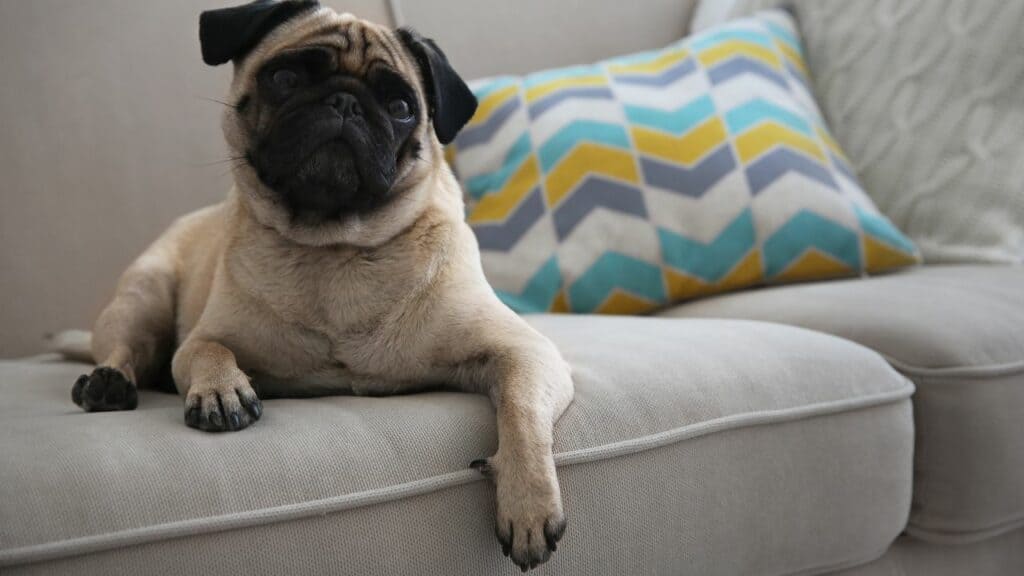
Heavy furniture, such as bookshelves, cabinets, or entertainment centers, can pose a significant danger to your dog if they are not securely anchored.
These pieces of furniture may accidentally tip over if your dog jumps on them, potentially causing serious injuries.
It is important to secure heavy furniture to the wall to prevent such accidents.
Furniture straps or anchors can be easily installed to firmly attach the furniture to a stud in the wall.
By taking this precautionary step, you create a stable and secure environment where your dog can move freely without the risk of furniture toppling over.
This protects your dog and provides you with peace of mind, knowing that your home is a safe place for you and your furry companion.
Use Pet-Friendly Cleaners For A Safe And Healthy Environment
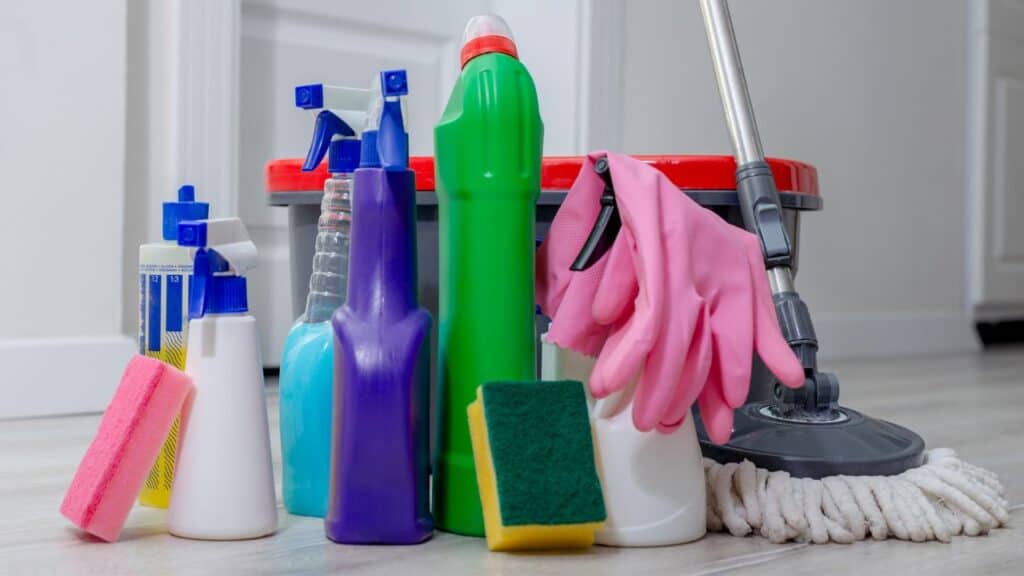
Maintaining a clean and hygienic home is important, but it’s equally essential to ensure that your cleaning products are safe for your dog.
Harsh chemicals in many cleaning products can be toxic to animals and may cause skin irritations or respiratory issues when inhaled.
To create a truly pet-friendly environment, consider opting for cleaners that are specifically formulated to be non-toxic and safe for animals.
There are now numerous eco-friendly and natural cleaning alternatives available that are effective in maintaining cleanliness while ensuring the well-being of your dog.
By choosing pet-friendly cleaners, you protect your dog from potential chemical hazards and contribute to a healthier and more sustainable living environment.
Store Human Food Securely To Prevent Ingestion Of Toxic Items
When it comes to creating a safe environment for your dog, it’s crucial to keep human food out of their reach.
Some food items that are perfectly fine for us can be highly toxic to dogs.
Chocolate, grapes, onions, certain nuts, and other human foods can cause serious health issues if ingested by dogs.
It’s important to store these items securely, preferably in closed cabinets or inaccessible containers to your furry friend.
By being mindful of where you store human food and taking precautions to prevent accidental ingestion, you can protect your dog from potentially dangerous situations and maintain their overall well-being.
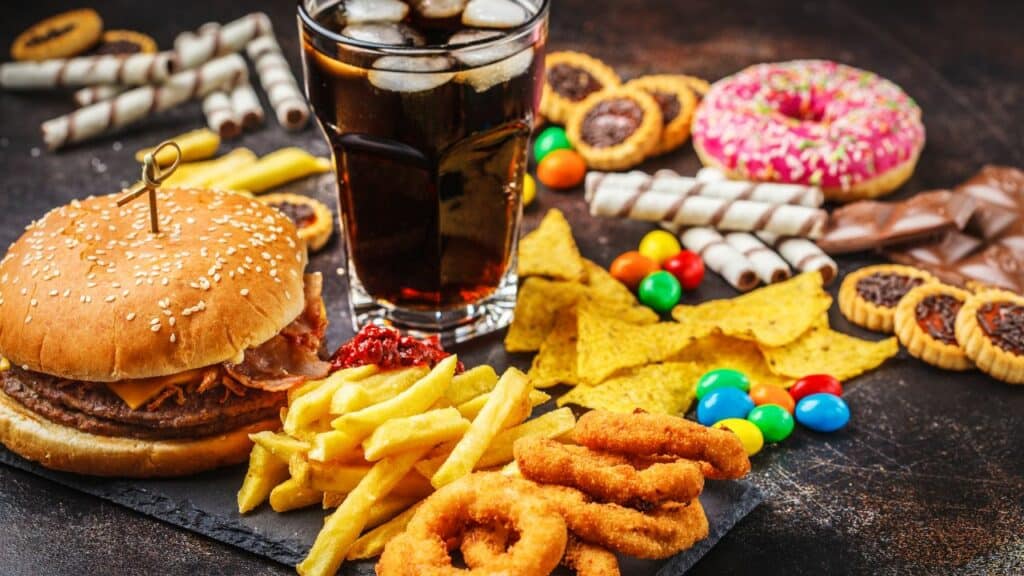
Secure Dangling Cords From Blinds And Curtains To Prevent Accidents
Dangling cords from blinds and curtains can pose a significant hazard to your dog.
Dogs, especially puppies, may be enticed to play with or chew on these cords, leading to accidents and injuries such as strangulation or choking.
To create a safer environment, it’s essential to tie up or secure the cords out of your dog’s reach.
You can use cord holders or wind the cords around hooks to keep them taut and eliminate any dangling portions.
By addressing this potential danger, you minimize the risk of your dog getting entangled and experiencing harm, allowing them to navigate your home without unnecessary risks.
Keep Low-Hanging Decorations Out Of Reach To Prevent Ingestion Or Entanglement
As you decorate your home, it’s important to be mindful of low-hanging decorations.
Ornaments, strings of lights, and other decorative items can appeal to dogs but also present potential hazards.
Dogs may accidentally ingest small ornaments or become entangled in strings of lights, leading to choking or other injuries.
Keep low-hanging decorations out of your dog’s reach to prevent these incidents.
Hang ornaments higher on the tree, secure strings of lights higher up or behind furniture, and be cautious of any decorations that can easily be pulled down.
Taking these measures ensures that your dog can freely move around the house without the risk of accidental ingestion or entanglement.
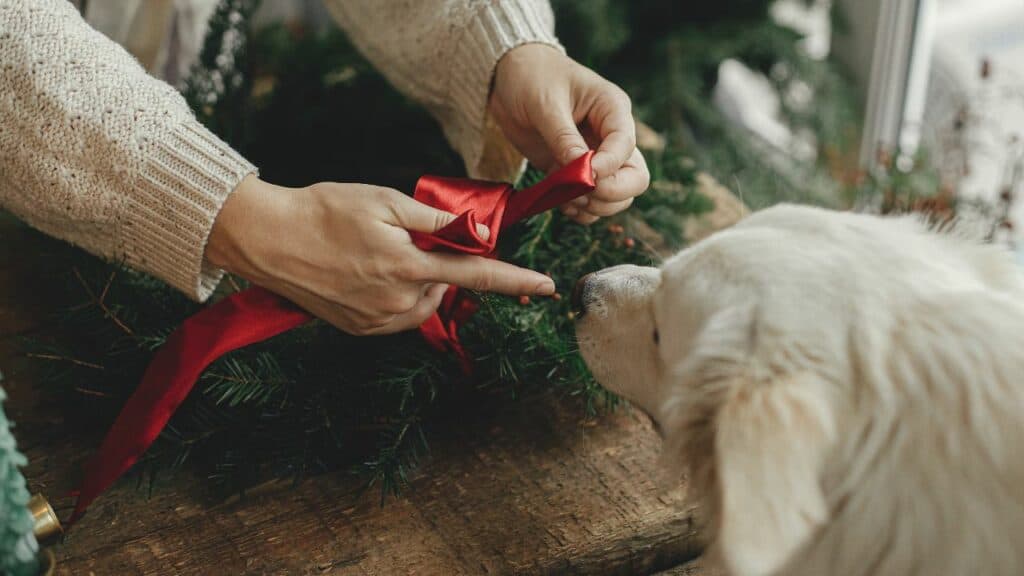
Store Fragile Decorations And Breakable Items Securely
Fragile decorations and breakable items can pose a danger to both your dog and your belongings.
Dogs with wagging tails or inquisitive noses may accidentally knock over or damage fragile objects, leading to injuries or costly replacements.
Store fragile decorations, vases, and other breakable items on high shelves or in secure cabinets to prevent such accidents.
By keeping these items out of your dog’s reach, you safeguard your possessions and protect your dog from potential harm caused by broken shards or sharp edges.
Creating a safe environment involves considering the potential risks of fragile objects and taking steps to mitigate them.
Protect Power Outlets To Prevent Electrical Accidents
Electrical outlets can be tempting targets for dogs, who may be curious about sticking their paws or nose into them.
Protecting power outlets is important to prevent potential electric shocks or injuries.
Consider using outlet covers that block access to the outlet and include cord concealers.
These covers provide an additional layer of safety by preventing your dog from tampering with electrical connections or chewing on exposed cords.
By ensuring the security of power outlets, you create a safer living space and minimize the risk of electrical accidents for your furry friend.
Close Toilet Lids To Prevent Ingestion Of Harmful Substances
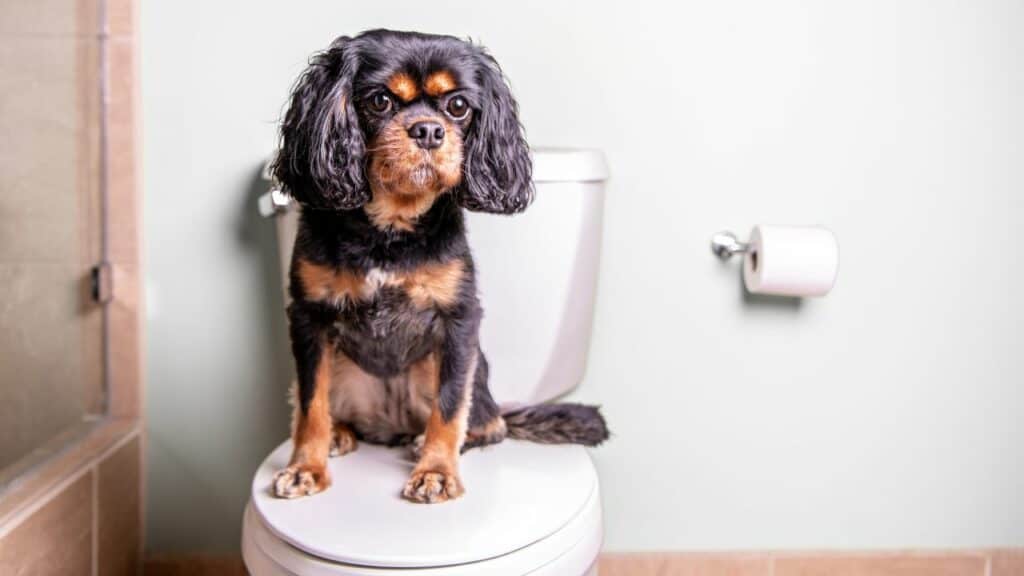
It may be a surprise, but leaving the toilet lid open can pose a potential hazard to your dog.
Dogs are known to be curious and may be tempted to drink from or play in the toilet water.
However, this water can contain harmful bacteria or cleaning chemicals that can be detrimental to their health.
To create a safe environment, keeping the toilet lids closed is essential.
Doing so prevents your dog from accessing potentially contaminated water and reduces the risk of them ingesting harmful substances.
Remember, a small action like closing the toilet lid can go a long way in protecting your dog’s well-being.
Secure Windows And Supervise Open Windows To Prevent Falls Or Escape
Open windows can invite dogs to adventure, but they also present potential dangers.
Suppose you have windows that your dog can easily access.
In that case, taking precautions is important to ensure their safety.
Secure the windows by installing sturdy screens or consider using window guards designed specifically for pets.
These protective measures help prevent accidental falls, keeping your dog safe and sound within the confines of your home.
Additionally, it’s essential to supervise your dog when windows are open to prevent them from squeezing through or attempting to jump out.
By being attentive and proactive, you can create a secure environment that minimizes the risk of your dog escaping or suffering injuries from falls.
Have A Securely Fenced Backyard To Provide A Safe Outdoor Space
Your backyard should be a haven where your dog can safely enjoy outdoor time.
To ensure their well-being, it’s crucial to have a securely fenced backyard.
A sturdy fence is a barrier, preventing your dog from wandering off and encountering potential dangers.
Regularly inspect the fence for any gaps, holes, or areas of damage that could serve as escape routes for your dog.
Repair or reinforce any weak spots promptly to maintain the fence’s integrity.
Additionally, be mindful of any objects or substances within the backyard that could be hazardous to your dog, such as toxic plants, sharp objects, or chemicals.
Creating a secure and hazard-free backyard provides your dog with a safe space to exercise, play, and explore without the risk of getting lost or harmed.
Provide Supervision In Unfamiliar Environments Or Around Hazards
While it’s impossible to foresee every potential danger, providing supervision is key to keeping your dog safe in unfamiliar environments or around potential hazards.
Being attentive and present is crucial when taking your dog for a walk, visiting a park, or exploring new surroundings.
Keep a watchful eye on your dog to ensure they don’t consume any discarded food or come into contact with toxic substances.
Be aware of any potentially dangerous plants along your route and prevent your dog from chewing or ingesting them.
By actively supervising your dog in different environments, you can intervene quickly if any risks arise, minimizing the chance of accidents or health issues.
Remember, your presence and vigilance are vital in creating a safe environment for your furry companion.
Maintain A Comfortable Temperature To Prevent Heatstroke Or Hypothermia
Maintaining a comfortable temperature for your dog is essential for their safety and well-being.
Dogs are susceptible to heatstroke and hypothermia, so avoiding temperature extremes is important.
During hot weather, always give your dog access to shade and fresh water.
Never leave them in a parked car, even for a few minutes, as the temperature inside can quickly rise to dangerous levels.
In cold weather, ensure your dog has a warm and dry shelter, and consider using dog clothing or booties to provide extra warmth and protection against the cold.
By being mindful of the temperature and taking appropriate measures, you can prevent your dog from suffering from heat or cold-related illnesses and ensure their comfort in any weather condition.
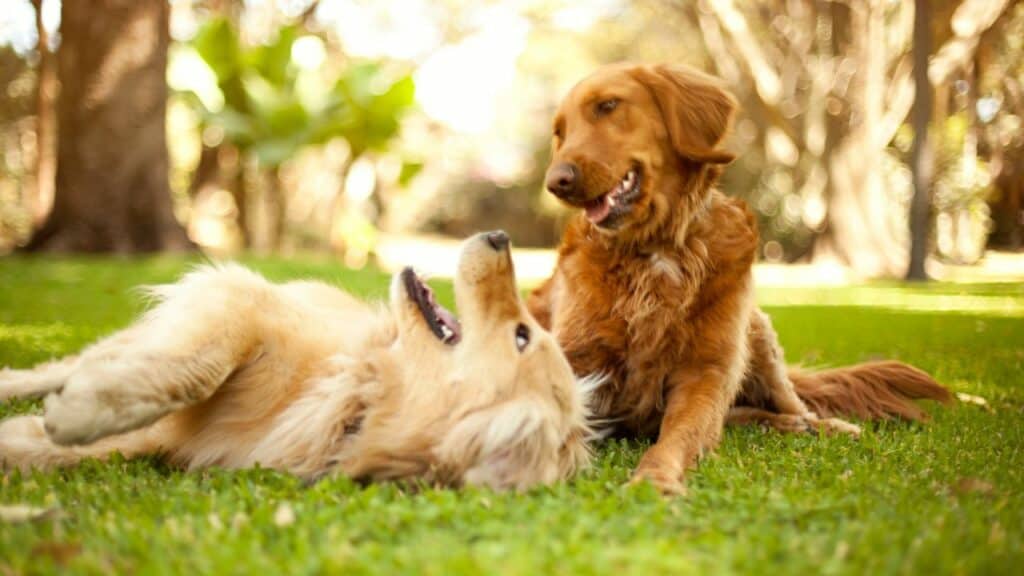
Properly Socialize Your Dog To Reduce Fear-Based Aggression Or Anxiety
Proper socialization is crucial to creating a safe environment for your dog.
Socializing your dog from an early age helps them develop positive and confident behavior, reducing the risk of fear-based aggression or anxiety.
Introduce your dog to various people, animals, and environments in a controlled and positive manner.
Expose them to different sights, sounds, and experiences, gradually increasing the level of challenge as they become more comfortable.
Enroll them in puppy classes or consult a professional dog trainer to ensure proper socialization techniques.
By providing your dog with positive and well-rounded social experiences, you foster their ability to adapt and behave appropriately in various situations, enhancing their safety and overall quality of life.
Schedule Regular Veterinary Care For Overall Health, Vaccinations, And Parasite Prevention
Regular veterinary care is an essential component of maintaining your dog’s health and ensuring their safety.
Schedule routine check-ups with your veterinarian to monitor your dog’s overall well-being, receive necessary vaccinations, and address any potential health concerns.
Regular preventive treatments for parasites, such as fleas, ticks, and heartworms, are also vital for your dog’s safety and comfort.
These preventive measures help protect your dog from potentially harmful diseases and pests.
Additionally, regular examinations allow your veterinarian to detect any health issues early on, providing timely interventions and improving the chances of successful treatment.
By prioritizing regular veterinary care, you take proactive steps to keep your dog healthy, safe, and thriving for years to come.
Before You Go…
If you want to learn more, watch the following video.

